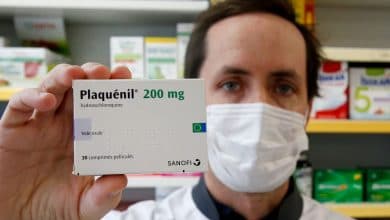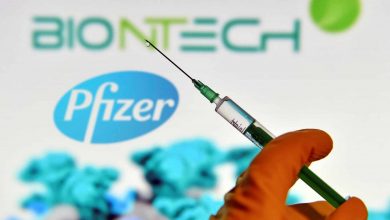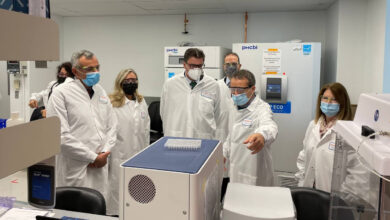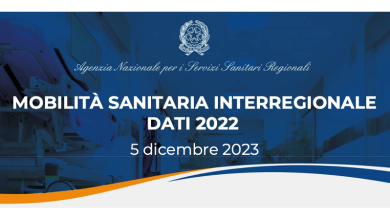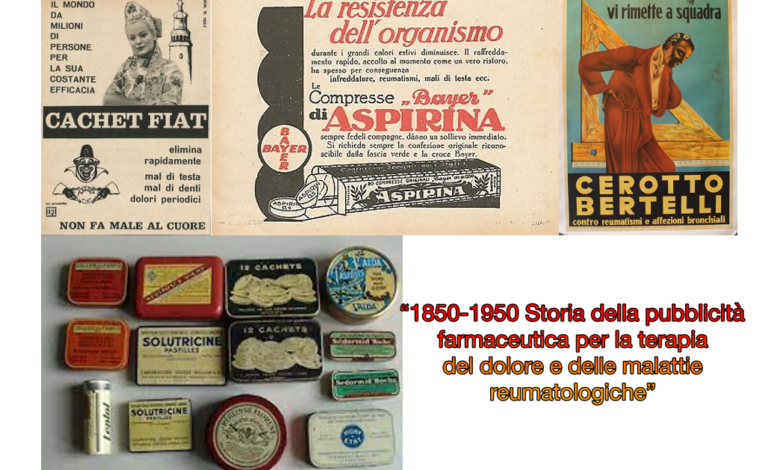
Rheumatology, the exhibition of advertising for pain therapy is underway
The "1850-1950 History of pharmaceutical advertising for the treatment of pain and rheumatological diseases" initiative is held in Perugia (from 7 to 17 July at the Cloister of the Cathedral of San Lorenzo)
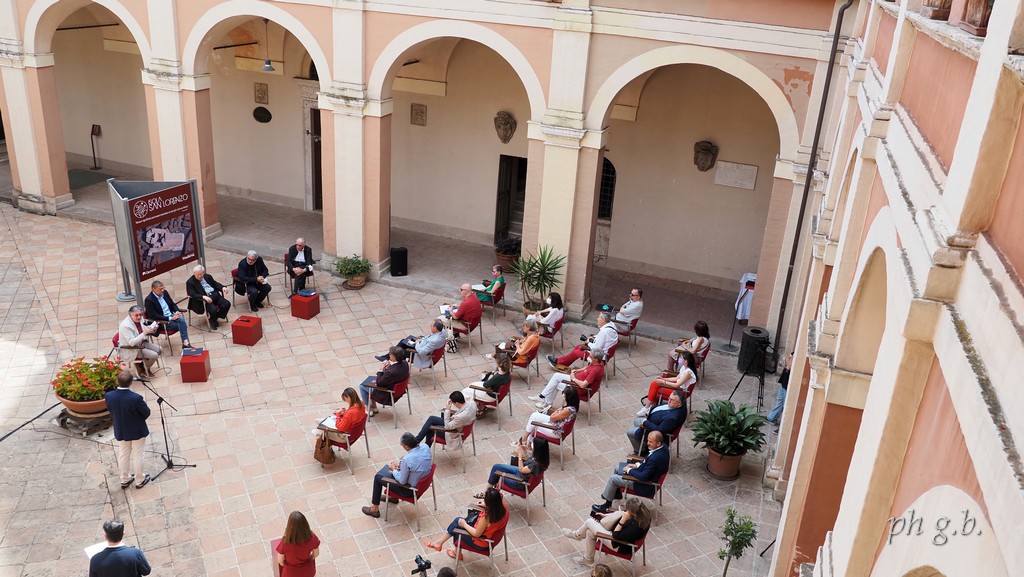 Perugia, 5 July 2022 - A century of advertisements and advertising posters to testify how the analgesic and anti-inflammatory treatments used in rheumatology have evolved. This is the content of the exhibition 1850-1950 History of pharmaceutical advertising for the treatment of pain and rheumatological diseases which will be held in Perugia from 7 to 17 July. Venue of the initiative will be the splendid Cloister of the Cathedral of San Lorenzo.
Perugia, 5 July 2022 - A century of advertisements and advertising posters to testify how the analgesic and anti-inflammatory treatments used in rheumatology have evolved. This is the content of the exhibition 1850-1950 History of pharmaceutical advertising for the treatment of pain and rheumatological diseases which will be held in Perugia from 7 to 17 July. Venue of the initiative will be the splendid Cloister of the Cathedral of San Lorenzo.
A unique cultural initiative of its kind, promoted by the Italian Society of Rheumatology (SIR) and which is presented today with a national online press conference. The organization of the event, as well as the technical-scientific secretariat, is entrusted to the Institute of History of Rheumatology, born at the end of 2020 from an idea of SIR.
The exhibition follows the long itinerary of how this particular form of advertising was born, evolved and what influence it has had on the type of approach to increasingly widespread diseases, such as rheumatology. The various works on display are thus also the historical testimony of the desire for greater well-being on the part of patients who, yesterday as today, are grappling with the most obvious and difficult manifestation of rheumatological pathologies: pain.
“Our Institute was born with the aim of uniting historical research with medical research – says prof. Leonardo Punzi, Director of the Institute of the History of Rheumatology -. We are therefore proud to promote a prestigious initiative that can have different interpretations. Advertising was born in the mid-1800s following the second industrial revolution and the marketing of numerous products.
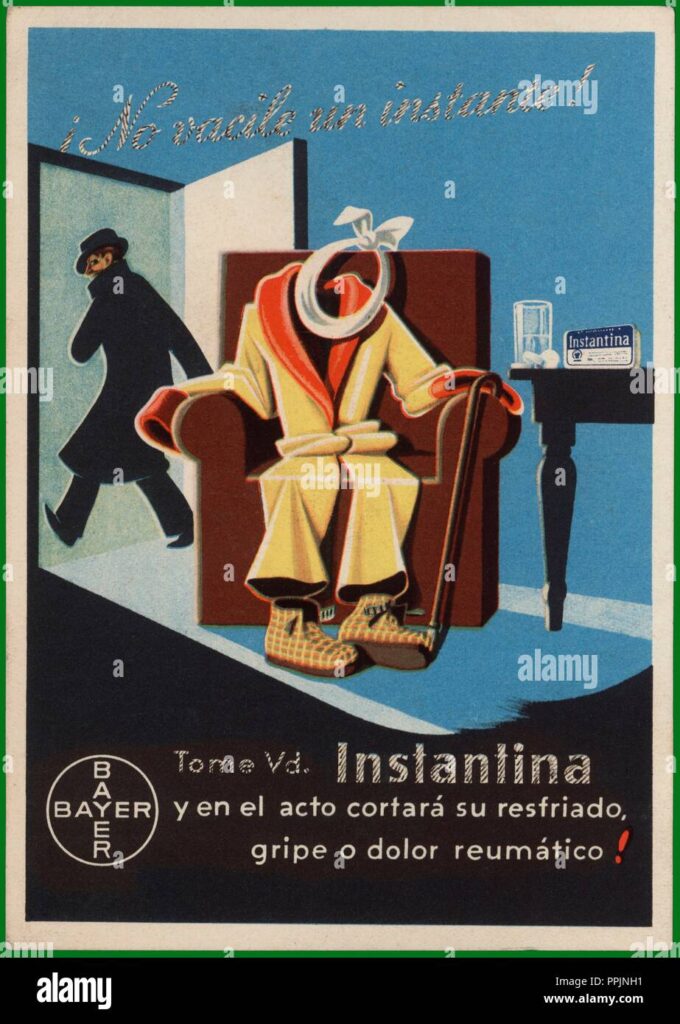 The population was especially in need of painkillers and companies tried to promote their consumption through posters or newspaper advertisements. In 1860/70 the main analgesics were opium derivatives including morphine, heroin and cocaine whose consumption was also encouraged among children. Obviously everything must be traced back to the historical context of the time in which scientists ignored the devastating effects on the body induced by these drugs.
The population was especially in need of painkillers and companies tried to promote their consumption through posters or newspaper advertisements. In 1860/70 the main analgesics were opium derivatives including morphine, heroin and cocaine whose consumption was also encouraged among children. Obviously everything must be traced back to the historical context of the time in which scientists ignored the devastating effects on the body induced by these drugs.
The turning point came in 1897 when aspirin was invented and here we witnessed a real revolution. The boom in interest created by the new drug, both analgesic and anti-inflammatory, has influenced pharmaceutical companies, scientific research and even advertising”. “Advertising also bears witness to the evolution of the perception of rheumatological diseases which in the mid-19th century were still little known – adds prof. Roberto Gerli, SIR National President -. The only known, sufficiently diagnosed and studied was gout which was considered a pathology by the rich and aristocrats because it was closely linked to the abundant consumption of red meat and game.
In the mid-1900s knowledge in terms of pathogenesis, diagnosis and epidemiology had already grown enormously compared to a hundred years earlier. This also applies to therapies, so much so that in 1948 we arrive at the first use of cortisone, another drug that has revolutionized rheumatology and medicine in general".
“Now we know that there are over 150 rheumatological diseases and that in Italy alone they affect more than five and a half million people – continues Punzi -. Obviously, compared to the second half of the nineteenth century, science has made giant strides and there has been, over the years, the introduction of extremely more effective therapies both for the management of pain and inflammation”. “As a Scientific Society we have been for a long time 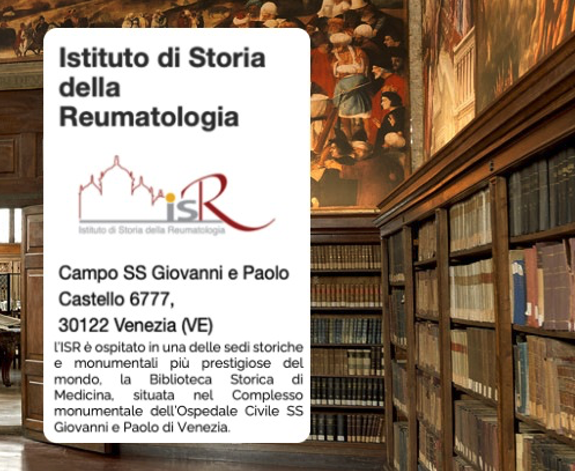 also engaged in the promotion of campaigns and initiatives dedicated to the lay public – underlines Gerli -. The goal we set ourselves, also with the Perugia exhibition, is to increase knowledge of pathologies to which the right attention is not always dedicated”.
also engaged in the promotion of campaigns and initiatives dedicated to the lay public – underlines Gerli -. The goal we set ourselves, also with the Perugia exhibition, is to increase knowledge of pathologies to which the right attention is not always dedicated”.
In the cloister of the Cathedral of San Lorenzo, over 100 works of art created between the mid-1800s and mid-1900s are exhibited. "At the turn of the 19th and 20th centuries, companies turned to the great artists of the time who were able to represent the ferment of the great transformations that were taking place in society - adds Dr. Elisabetta Pasqualin, Director of the National Museum Salce di Treviso collection -. Thus was born a new art form that became increasingly important during the 1900s. In the exhibition we present posters of the highest artistic value and which at the same time also have an important social and cultural value. Advertising, even pharmaceutical advertising, has allowed a "democratization" of art, making it accessible to all, without any distinction, on the streets or in city stations".
As the city of Perugia we are pleased to host this exhibition, both for its scientific contents but also for the captivating key chosen which allows us to observe the change in pain therapy over time - concludes Leonardo Varasano, Councilor for Culture of the Municipality of Perugia - . On the one hand, in fact, we are presented with the history of pharmacological development through the observation of advertising posters, but on the other, this macro theme also allows us to observe the historical-artistic evolution of style and customs that took place over 100 years. I therefore believe that this exhibition, despite having pain therapy as its specific focus, also proposes the historical-artistic and social changes that have occurred over time, making it accessible to a wider audience and not just to doctors and specialists.
Related news: The birth of scientific drug information: from its origins to the present day. Semi-serious story

